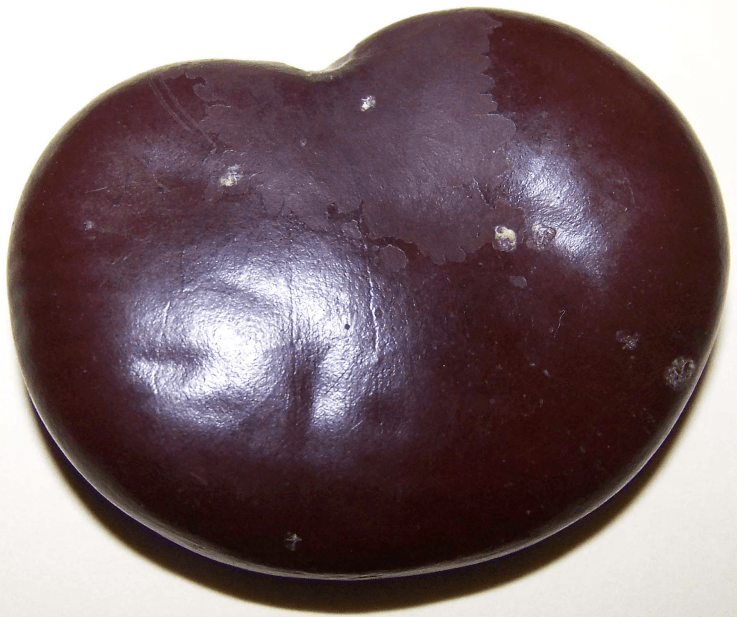by Linda Butcher

The SEA HEART, Entada gigas, is our largest typical sea bean. It has a history going back to Columbus. It sometimes called the Columbus Bean because of the discovery of one in the Azores, which gave Columbus a clue that land lay to the west.
The sea heart is mahogany in color and has a hard outer coating. They can grow up to 2 ½ inches in diameter and ¾ inch thick. The hard outer coating is about two millimeters thick, thus preventing sea water from entering. This is the reason they can float for many years. Some can be found with barnacles or algae growing on them. They are easily visible among the beach debris because of their large size.
Sea hearts are native to the American tropics. The huge seed pods are three feet long and contain five to fifteen seeds. The thick woody vines often engulf entire trees. They are found on beaches from Yucatan to Texas and Louisiana to Florida. On the Atlantic coast they can be found from Florida to as far north a Nantucket Island. Some are even caught up in the Gulf stream and end up on the beaches of the British Isles.

Even though they are called a Sea Heart or Heart Bean only about ten percent are heart shaped.
During the 19th and early 20th century the Sea Heart was used to make snuff boxes. They can be highly polished and are often used in making jewelry.


Leave a Reply